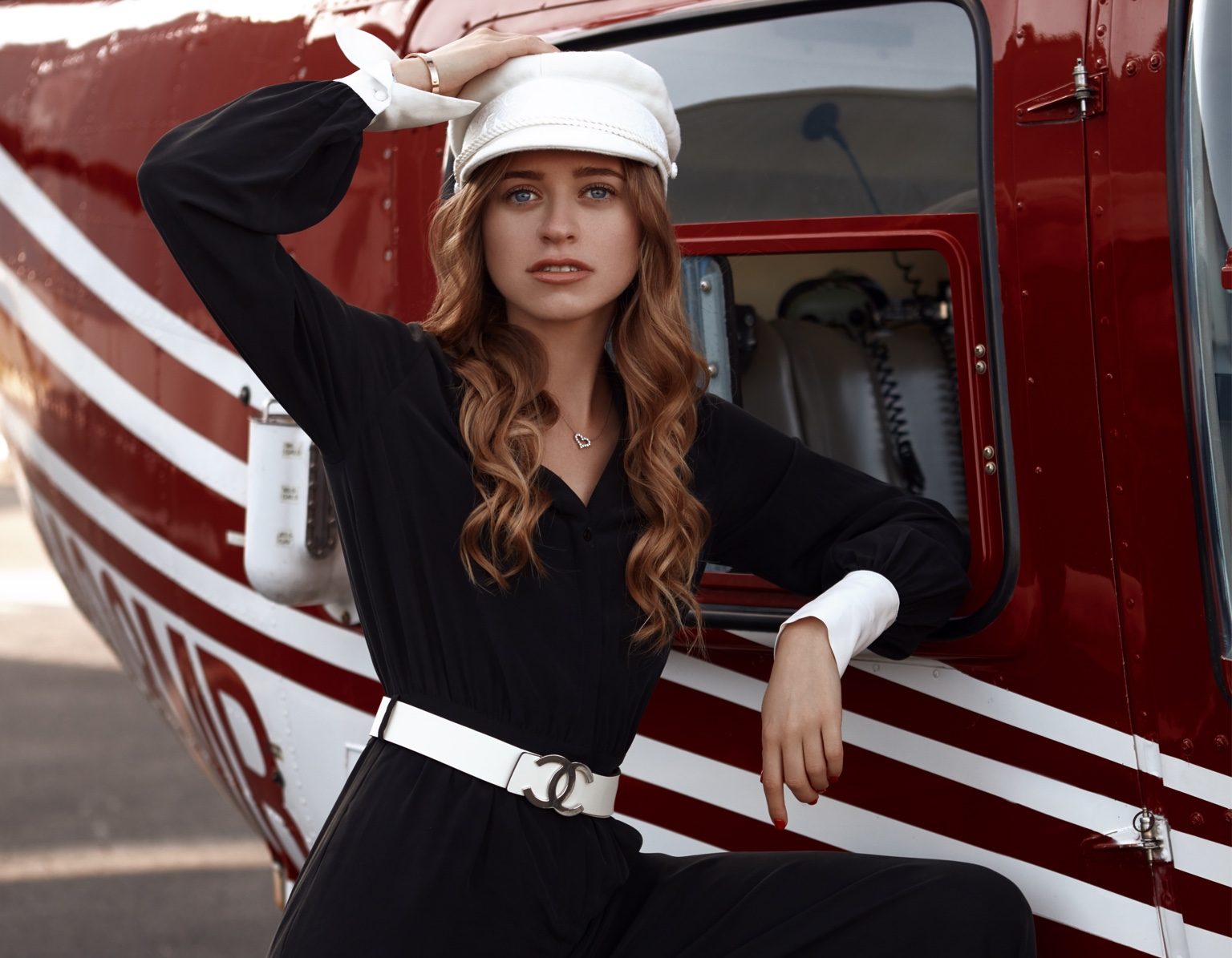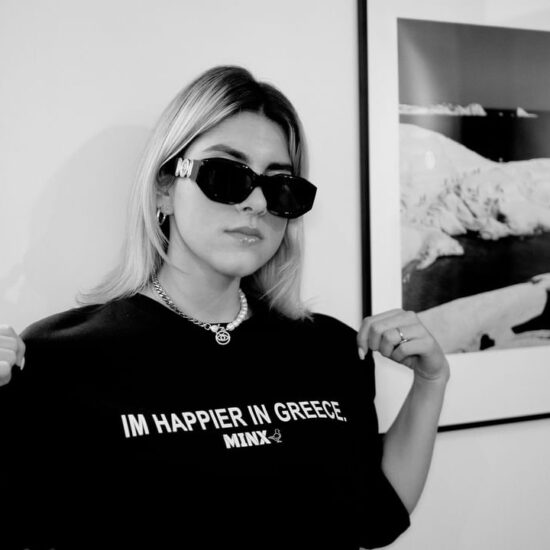We all know about the fairy godmother, but what if I told you there’s also such a thing as the Versace Godfather. He didn’t emanate from thin air to make the dreams of a poor young maiden come true; however, he does seem to have a magic wand that elevates a brand’s status from obscurity to luxury. His power is putting together the impossible on a moment’s notice. Stylist, creative director, consultant; you name it, he will be it. His name is Menailaos Samaras, the Versace Godfather, primed to get your brand ready for its ball. It all started with a young Greek Brooklynite, who journeyed through a tale of two cities. One of the Haves, and the other of the Have Nots. He claimed his style audaciously in both worlds and was influenced by the creativity that ignites when access is denied. Today he is now creating passage for himself and the people he works with. From his Versace looks to his fearless approach to creating and serving, Menailaos is definitely a force to reckon with in fashion. Industry Rules sits with the Versace Godfather as he discusses his journey to becoming the intrepid Stylist he is today.
RA: From what I’ve gathered you run an agency and are a very talented stylist. What is a day of work like for you?
M: The stylist usually pulls the looks without the models, even though I do let them participate in the pull sometimes. The wonderful thing about me is I do almost everything in house. I have a few interns and I have a photographer that I work with closely, so we can put stuff together on short notice. I’ll give you an example of one of the most stressful days that I can remember. I had Bartholomew from HBO The Hype season 2 reach out to me. He wanted some representation in New York, cause’ everybody knows New York is really my thing right now. I’ve really established myself in the New York market. I got him a collaboration with Society. We put together a whole show that was a bikini streetwear collab. We had to cast all the models and get a jewelry designer short notice because the original designer had an emergency and wasn’t able to get the stuff over. It was pretty crazy. After the show was over, Alex from Bikini Beach then tells me that we have an editorial shoot for Grazie. Naturally, I had to put everything together; line up the makeup artist, the models, the studio and have it all confirmed by 6 am the next day. On top of everything, the showroom that I pull from was doing their own fashion show so that showroom didn’t respond to us. But one of the models’ mother is a designer so I casted her and she brought some of the mother’s pieces. She was told she couldn’t do runway but I believed in her and I had her open up the show. And that’s my whole goal to be of service to small brands and designers, models to reach their growth.
RA: How did you get started in the world of fashion?
M: I was in and out of private prep school and public school in Brooklyn. So I saw how preppy kids wear Ralph Lauren, and I saw how the kids from Midwood high school, by the Junction, style their streetwear. I had a little bit of Versace back in High school but I definitely started with Tommy Hilfiger, and around 1993 we switched over to Ralph Lauren. He was making a lot of wearable art and it portrayed a certain lifestyle that we couldn’t afford at the time. The economy was rough by then, there was a recession and my parents pulled us out of private school to public and that was basically how kids could express themselves. We weren’t buying art in the form of Picassos, we were buying button downs from Lord and Taylor. Some of the kids would steal it. You know people would die for this stuff that’s why it was so exciting. They use to try and rob me all the time and I had to learn to fight for my clothes. I was always more of a hoarder collector and was pretty protective of my stuff. But 2 years ago I lost 50 lbs, and I went out for my birthday and met the rapper Daytona, who is the brand ambassador for Hennessy. On 15 minutes notice I pulled from my own wardrobe brought it to Daytona, he put it on, put it in a video and it opened so many doors for me.
RA: It seems like a lot of artists have a sort of method to their madness. Do you have a method or formula that you use when you’re styling for a shoot let’s say?
M: Well my niche is 90s street style-luxury. Learning from the hip hop artist; how Tupac dressed back in the day, and how JayZ was styled in his first video with foxy brown. I lived through it in high school so for me it’s almost like second nature. At first I might not see it. I might need a little feedback from an assistant, but the more I look at it the more it comes to existence.
RA: Is that method different from when you style yourself?
M: When I style myself it gets a little crazy! I’m better off styling other people. But yea, a lot of it is inspired by hip hop too. I wouldn’t say I have a method other than just seeing it, playing with the looks and feeding off other stylists. It also depends where I’m going too-I might have a wild street wear look, but then I decide I want to go to a fancy restaurant without a reservation and I’ll tone it down.
RA: I would assume one of the most important factors of doing what you do is networking and PR. What would be the most crucial thing you learned about networking throughout your career?
M: Number one is to talk to everybody. Most people think if they want to be on Vogue magazine they’ll have to talk to the head of Vogue and she’ll make it happen for you. But for me I found that I landed two of my biggest connections through hair people. The people that were doing my hair Upstate, did 85 shows for fashion week. They were the ones that started inviting me to the fashion shows which lead me to develop a relationship with Society.
RA: How do you build a relationship with the showrooms you pull from?
M: If you have a letter of reference from a magazine, they usually don’t charge you which is the best way to build that relationship. I would pull from my own wardrobe a lot but one day my go to photographer, Christian Paez, wanted me to do a Valentine’s Day project with him. So I decided to pull from Confessional showroom and at first I didn’t see anything I liked. It wasn’t what I expected, but then I started looking closer and finding these diamonds in the rough. Within 15 minutes I had my pull done, then I was able to stay after for an hour hanging out with the owner. Which is another example of how I network. It’s not leaving early and staying a little bit after, meeting and connecting with people.
RA: Who has been your biggest inspiration in the fashion industry?
M: I would have to say Gianni Versace. It’s just a certain thing that he did during a certain period and the way that he did it! He had every IT girl back in the 90s-Stephanie Seymour, Cindy Crawford, Naomi Campbell, Princess Yasmin, with the wild baroque. Everybody that was iconic back then had the Versace. After he died it plateaued a bit, but the reason I got back into it is because they retro’ed the 1992 collection which is the magic number for fashion. For example, there’s these limited Ralph Lauren items that have plate Items and it has a plate on it that says 1992 stadium. On the other hand, the Gianni shirts had the label that says Spring/Summer 1992 Tribute, honoring Gianni.
It also ties back into Greek mythology. I’m greek, both of my parents are from the same island. Gianni Versace took a lot of the stuff from Calabria, where he grew up and applied it to his designs. A lot of the themes for both countries are the same because you know during different empires, the borderlines expand and contract. So there were times where Greece was a part of Italy and vice versa. Everybody’s grandmother had a room full of black and gold frames, and the first piece that I bought when I got back into Versace was called the “Cornice” and that’s greek for frame.
Photo by Cristian Paez




